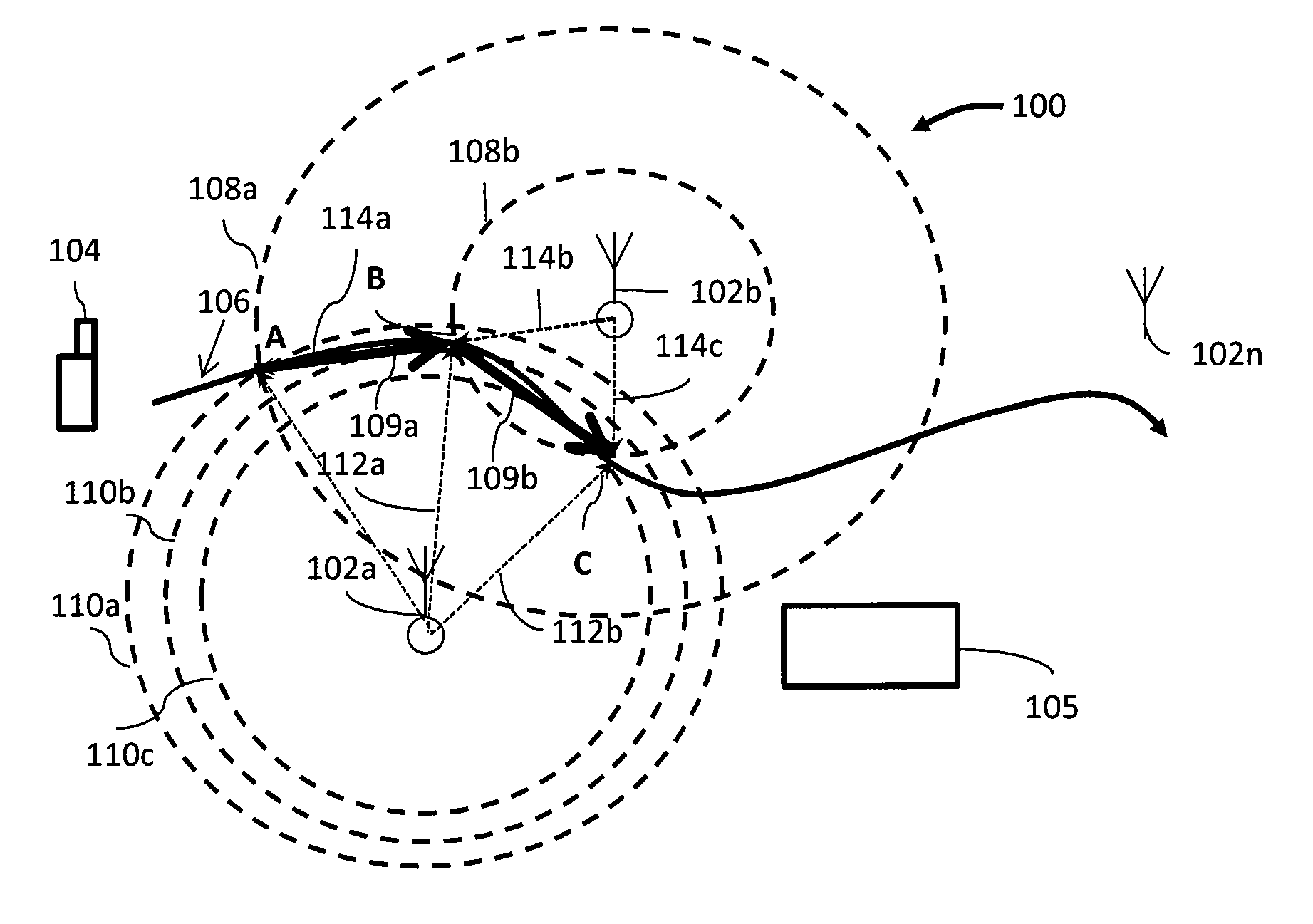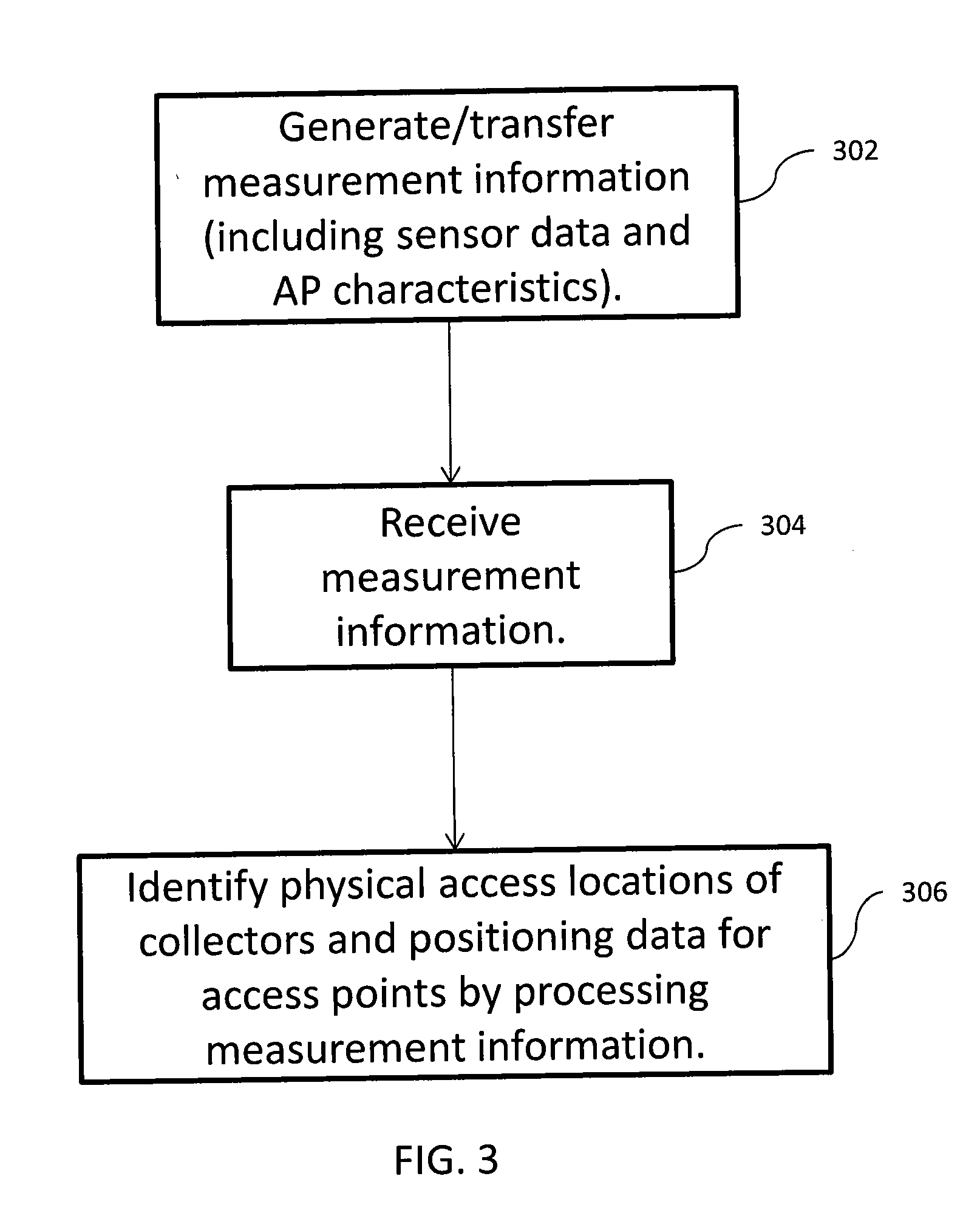Access point location identification methods and apparatus based on absolute and relative harvesting
a technology of absolute and relative harvesting and identification methods, applied in the direction of instruments, electrical devices, measurement devices, etc., can solve problems such as difficulty in determining an exact location
- Summary
- Abstract
- Description
- Claims
- Application Information
AI Technical Summary
Benefits of technology
Problems solved by technology
Method used
Image
Examples
Embodiment Construction
[0013]Embodiments of the invention overcome the limitation of conventional crowd-sourced learning systems by using absolute and / or relative information derived from automatic or manual crowd-sourced learning methods to obtain positioning data for access points, such as their locations or their fingerprints in an area covered by the access points, that may be used to locate other devices in the area covered. Although the invention is described in terms of an IEEE 802.11 Wi-Fi environment, as used herein, the term “access points” is meant to include any terrestrial RF transmitter or transmitter / receiver of wireless or radio frequency (RF) signals and “wireless transmitter / receiver” is meant to include any transmitter or receiver of wireless or RF signals. The term “position” or “location” information covers any measure of relative or absolute position or location, including without limitation, latitude and longitude, position on a map, or displacement in a polar or Cartesian coordinat...
PUM
 Login to View More
Login to View More Abstract
Description
Claims
Application Information
 Login to View More
Login to View More - R&D
- Intellectual Property
- Life Sciences
- Materials
- Tech Scout
- Unparalleled Data Quality
- Higher Quality Content
- 60% Fewer Hallucinations
Browse by: Latest US Patents, China's latest patents, Technical Efficacy Thesaurus, Application Domain, Technology Topic, Popular Technical Reports.
© 2025 PatSnap. All rights reserved.Legal|Privacy policy|Modern Slavery Act Transparency Statement|Sitemap|About US| Contact US: help@patsnap.com



